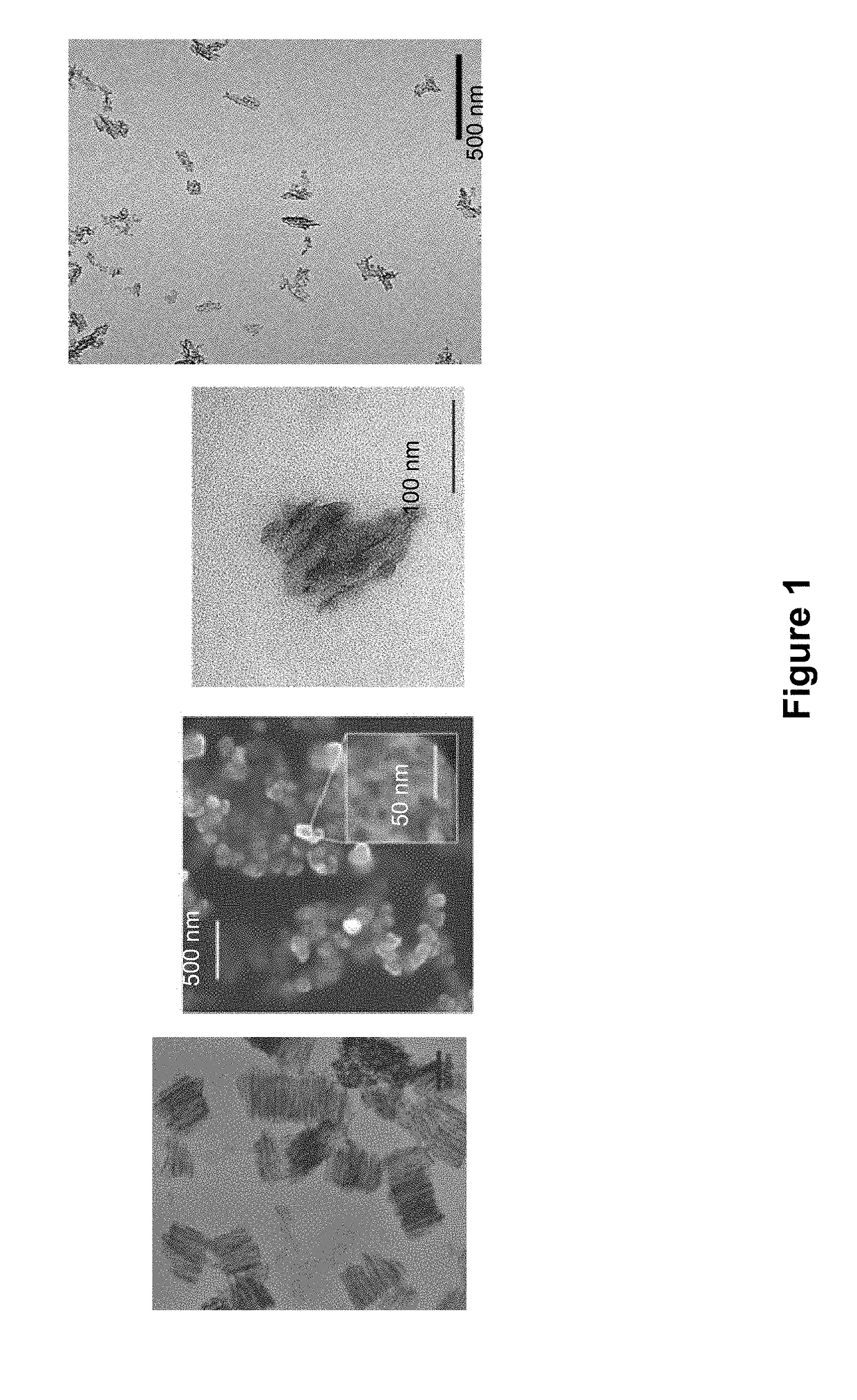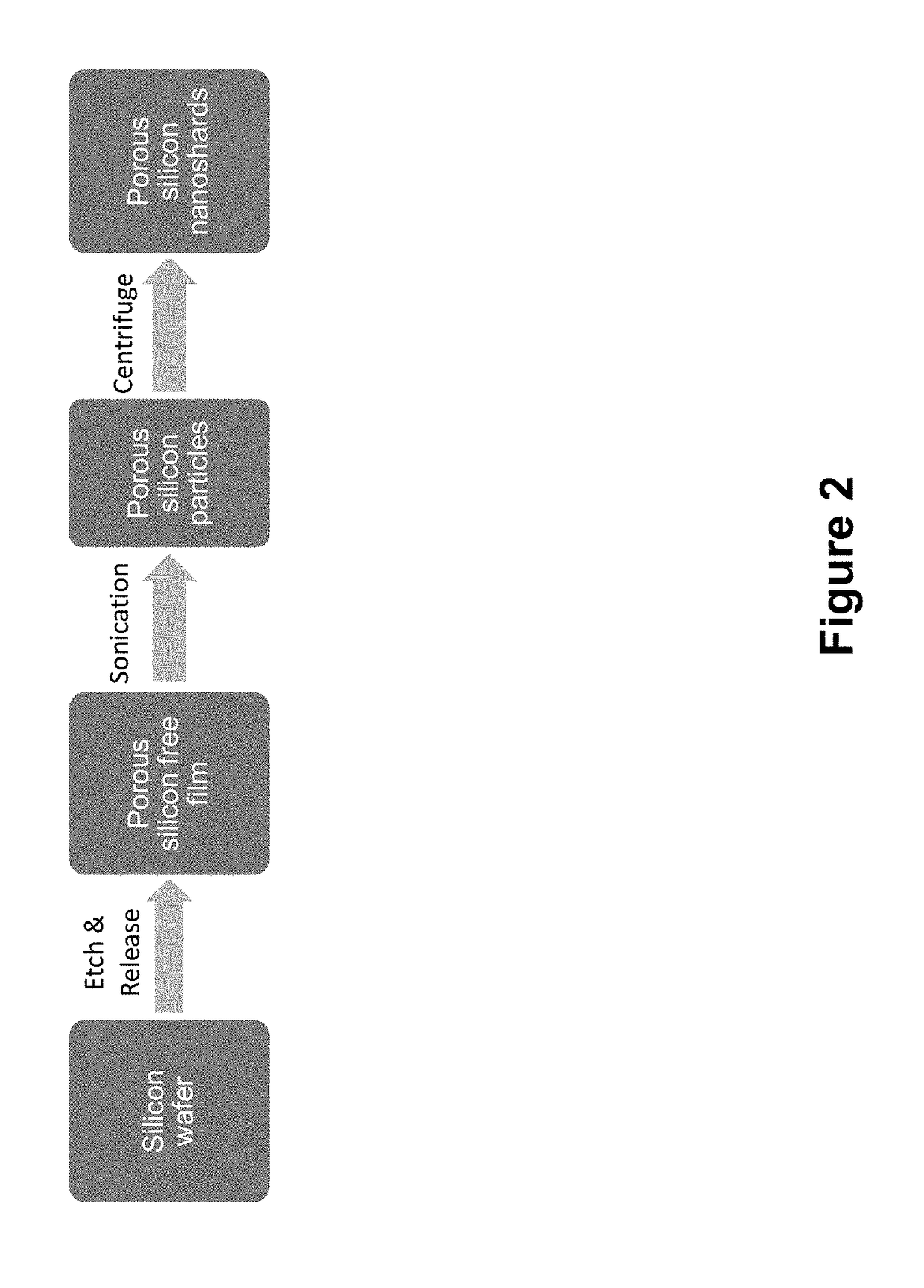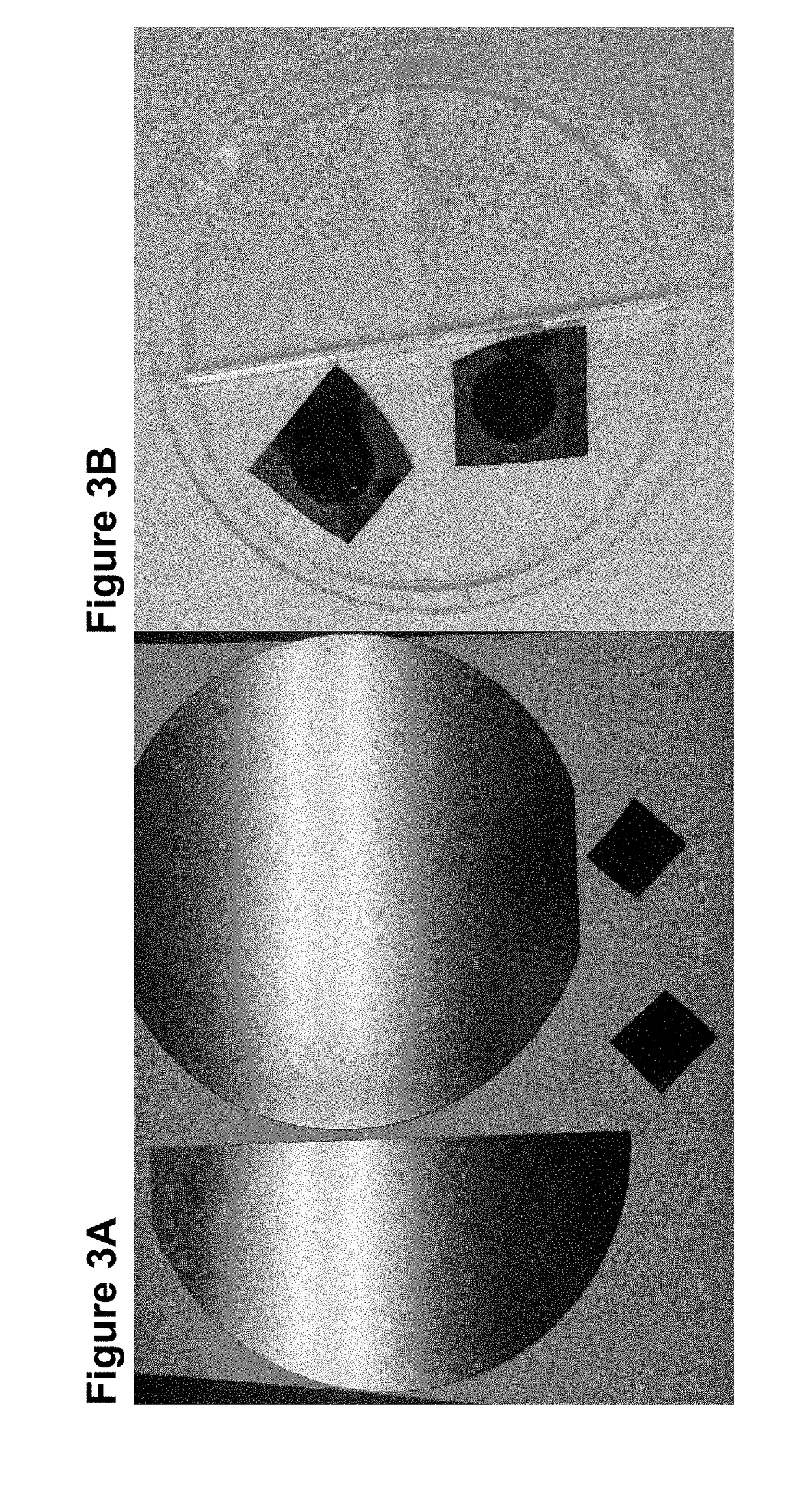Nanoparticle therapeutics for treating skin inflammatory disorders
- Summary
- Abstract
- Description
- Claims
- Application Information
AI Technical Summary
Benefits of technology
Problems solved by technology
Method used
Image
Examples
experimental examples
[0133]The invention is further described in detail by reference to the following experimental examples. These examples are provided for purposes of illustration only, and are not intended to be limiting unless otherwise specified. Thus, the invention should in no way be construed as being limited to the following examples, but rather, should be construed to encompass any and all variations which become evident as a result of the teaching provided herein.
[0134]Without further description, it is believed that one of ordinary skill in the art can, using the preceding description and the following illustrative examples, make and utilize the compounds of the present invention and practice the claimed methods. The following working examples therefore, specifically point out the preferred embodiments of the present invention, and are not to be construed as limiting in any way the remainder of the disclosure.
example 1
Porous Silicon Nanoshards
[0135]Porous Silicon (PSi) is produced by electrochemical anodization etching of single crystal silicon with a hydrofluoric acid electrolyte solution (Sailor. M. J. Porous Silicon in Practice. New York, N.Y., John Wiley & Sons, 2012, 27; Canham, L. T. Properties of porous silicon. EMIS datareviews series. 1987, 62-76). Porous silicon is classified by the width of the pores that are formed: microporous (less than 2 nm), mesoporous (between 2 nm and 50 nm) or macroporous (over 50 nm). Porosity and pore diameter are two important properties of this material that can be exploited for drug loading and delivery. Pore diameter and porosity can be tuned by controlling the electrochemical etch parameters, such as silicon crystal orientation, doping type and level, etchant composition, and current density (Canham, L. T. Advanced Materials, 1995, 12:1033; Qin Z T et al. Particle and Particles Systems Char, 2014, 31:252-256). Porosity and etch film thickness can be meas...
example 2
Immunomodulatory Effects of Nanoparticles on the Contact Hypersensitivity Response
[0151]Allergic Contact Dermatitis (ACD) is a delayed type IV inflammatory response to sensitizers that contact skin causing pruritus, erythema and vesiculation (Krasteva, M. et al. Eur J Dermatol, 1999, 9:144-159; Krasteva, M. et al. Eur J Dermatol, 1999, 9:65-77; Mowad, C. M. Current opinion in allergy and clinical immunology, 2006, 6:340-344; Kaplan, D. H. et al. Nat Rev Immunol, 2012, 12:114-124; Cashman, M. W. et al. Dermatologic clinics, 2012, 30:87-98). Approximately 15-20% of the US population suffers from ACD. It accounts for 95% of reported occupational skin disease and is the third most common reason patients visit a dermatologist (Clark, S. C. & Zirwas, M. J. Dermatologic clinics, 2009, 27:365-383). Common contact sensitizers include nickel, latex, and urushiol in poison ivy (Bordel-Gomez, M. T. et al. Actas dermo-sifiliograficas, 2010, 101:59-75). ACD is treated with topical anti-inflammato...
PUM
 Login to View More
Login to View More Abstract
Description
Claims
Application Information
 Login to View More
Login to View More - R&D Engineer
- R&D Manager
- IP Professional
- Industry Leading Data Capabilities
- Powerful AI technology
- Patent DNA Extraction
Browse by: Latest US Patents, China's latest patents, Technical Efficacy Thesaurus, Application Domain, Technology Topic, Popular Technical Reports.
© 2024 PatSnap. All rights reserved.Legal|Privacy policy|Modern Slavery Act Transparency Statement|Sitemap|About US| Contact US: help@patsnap.com










